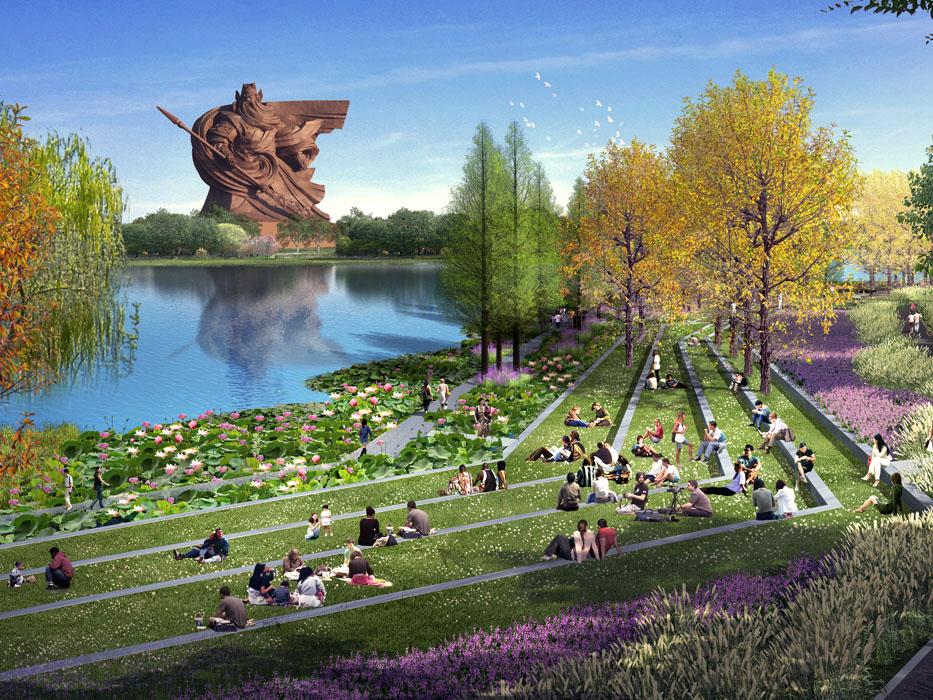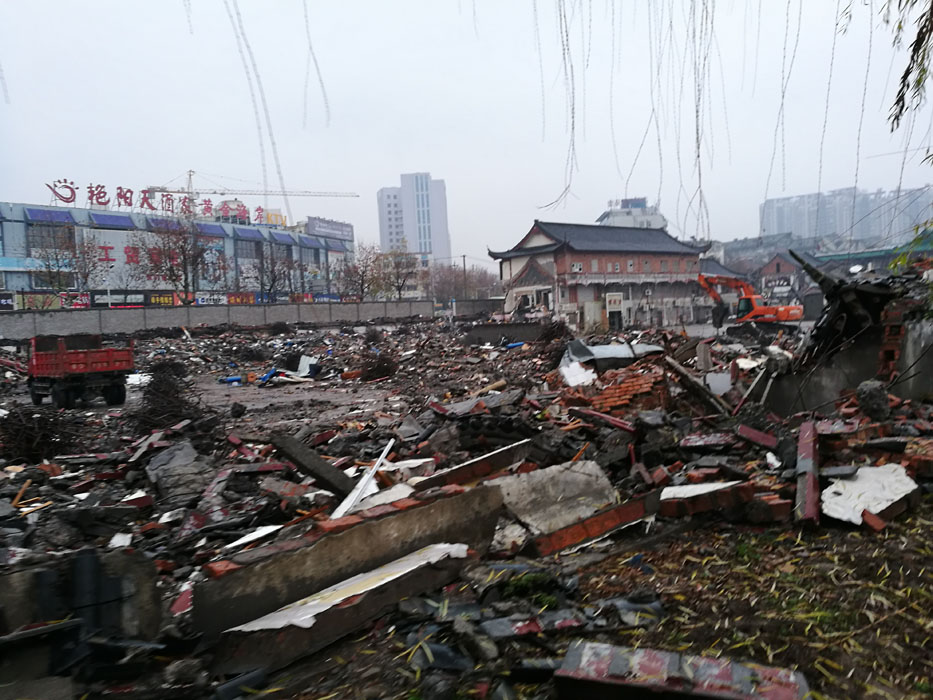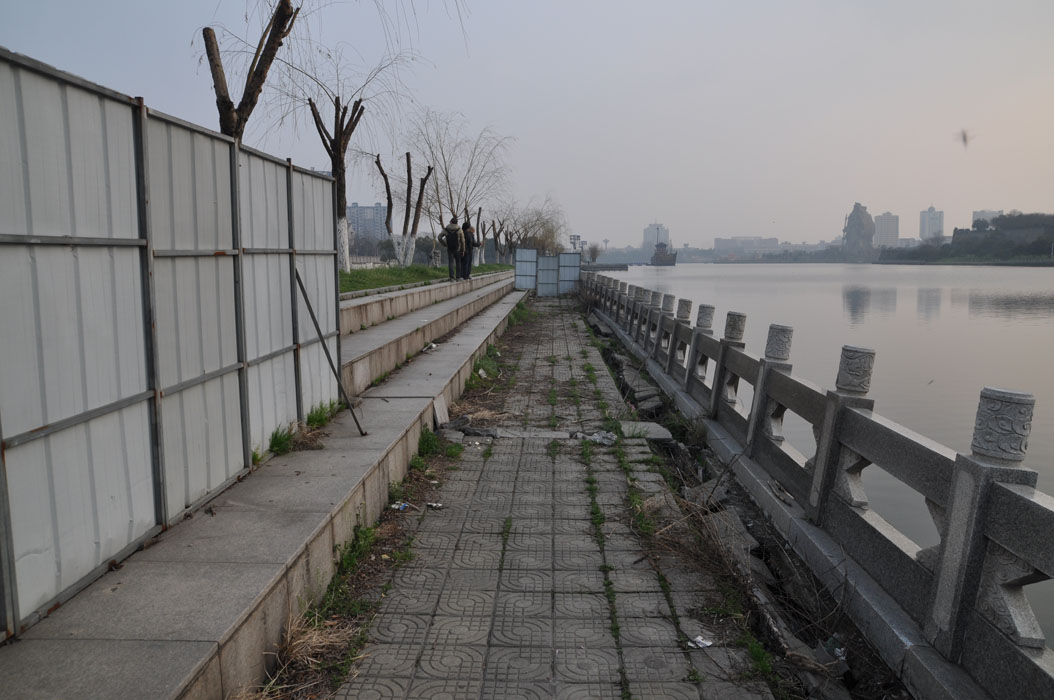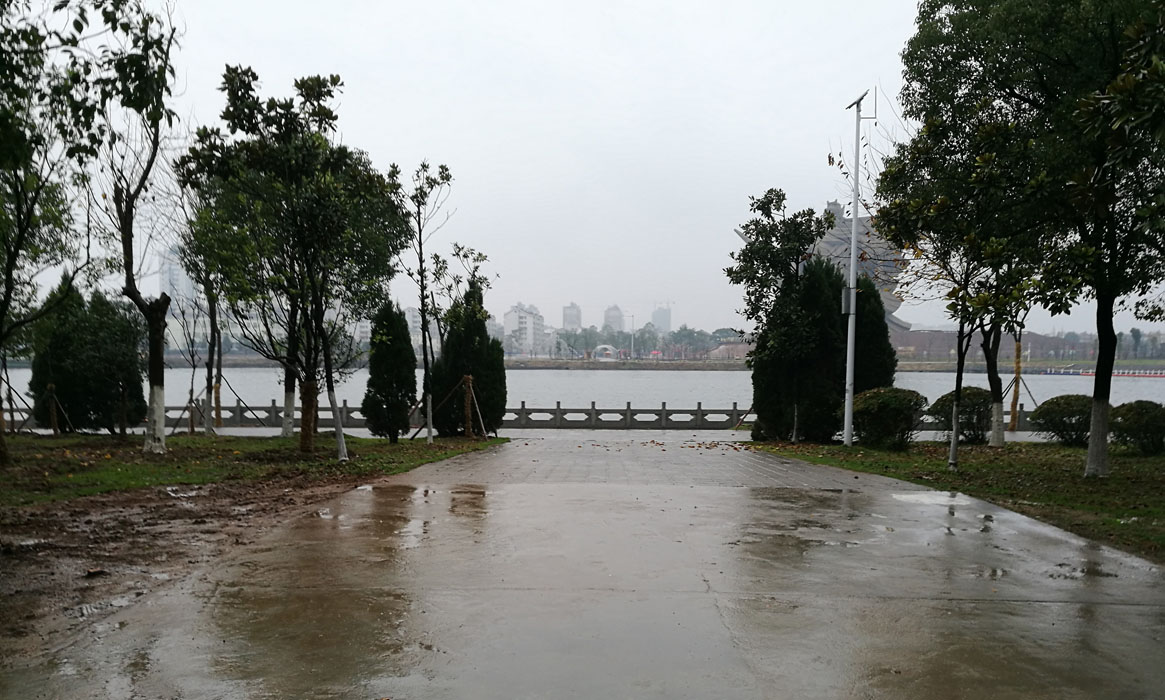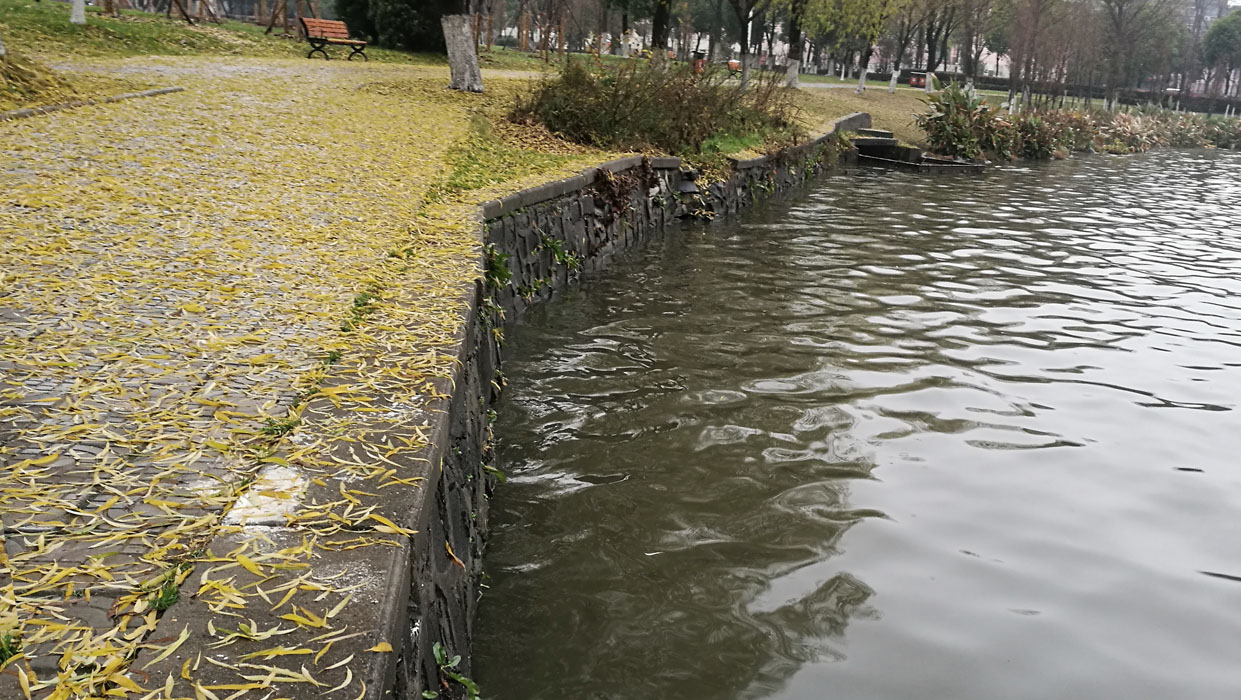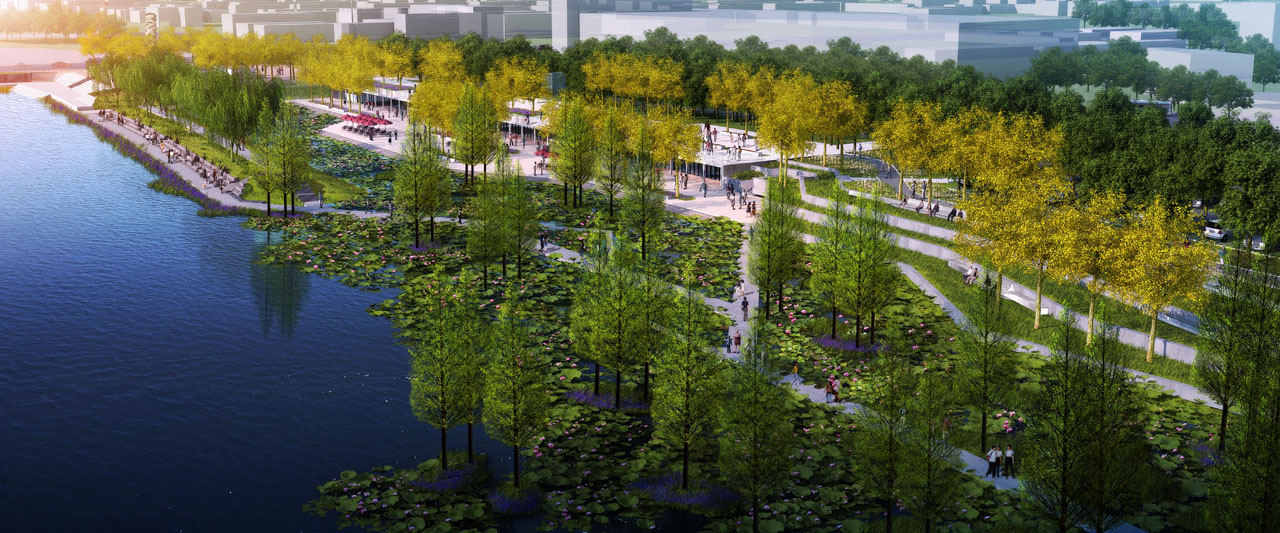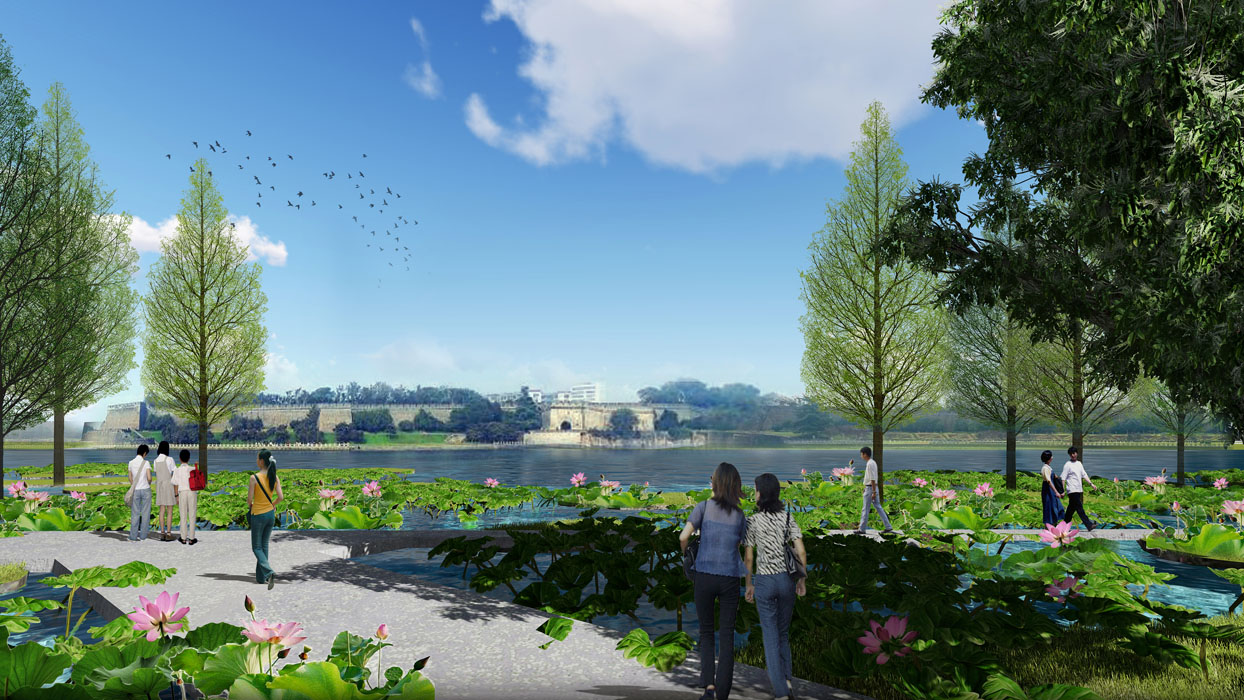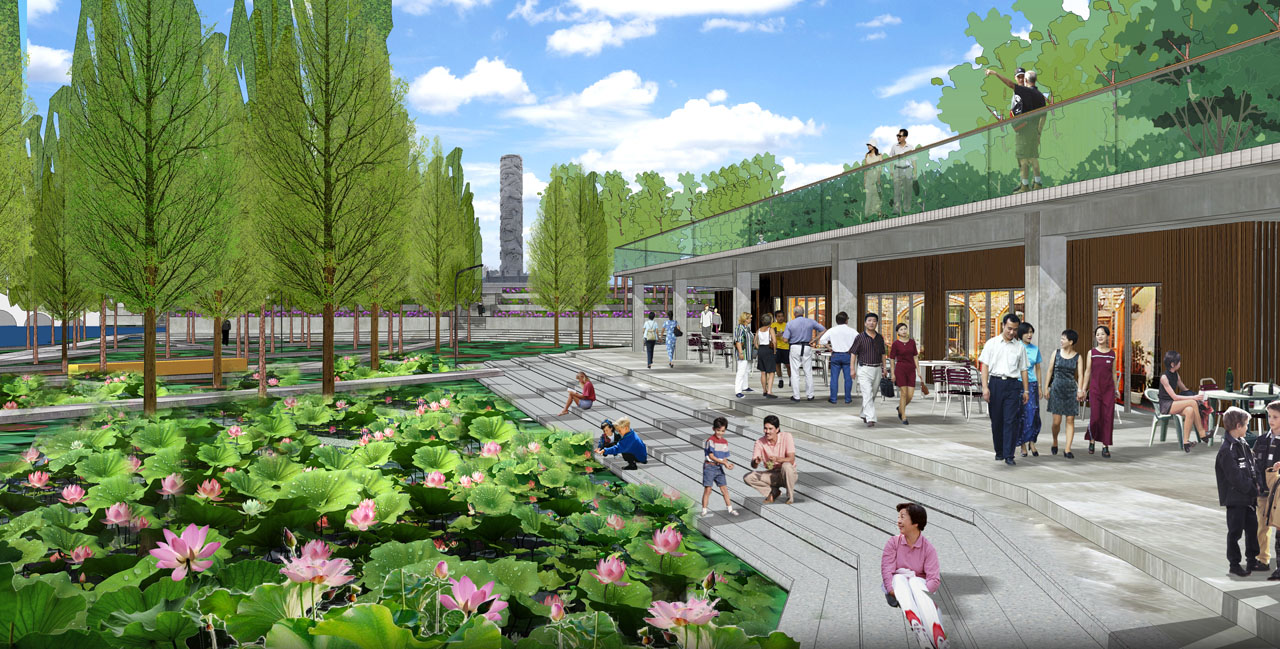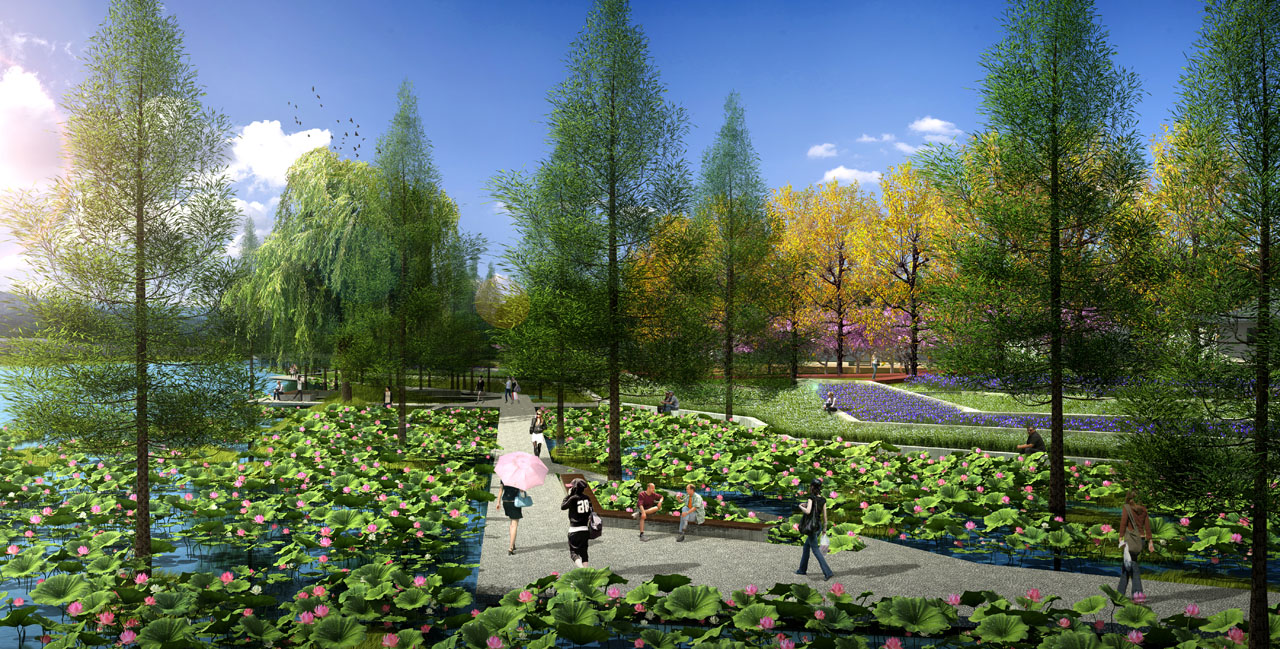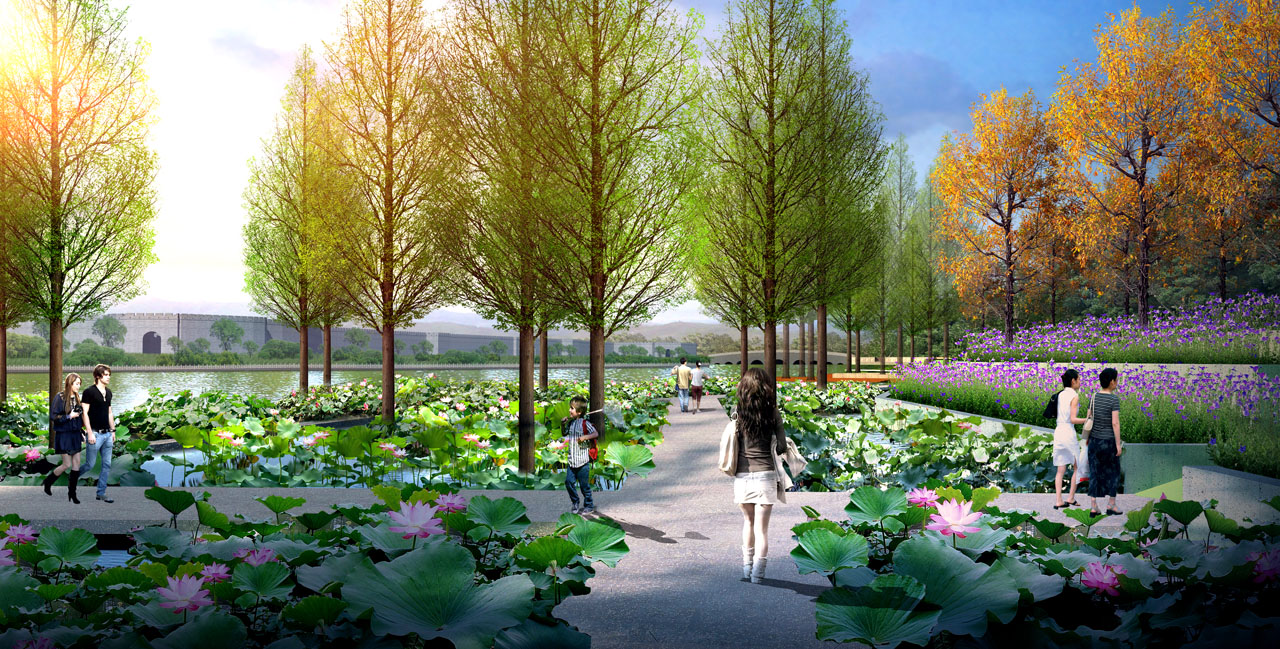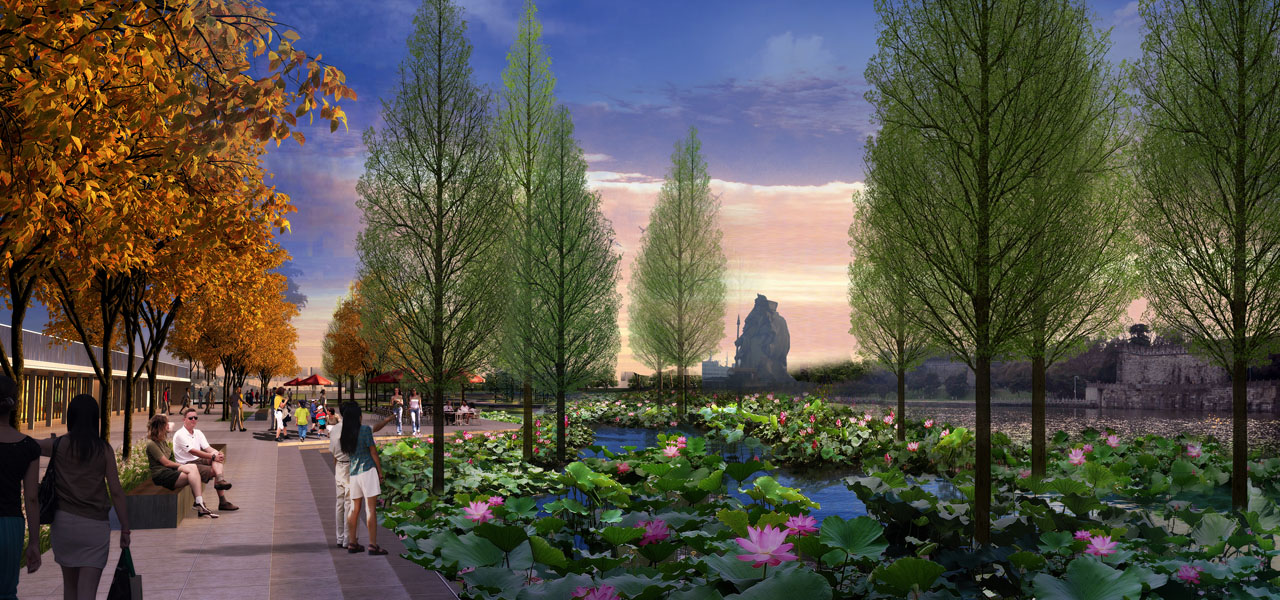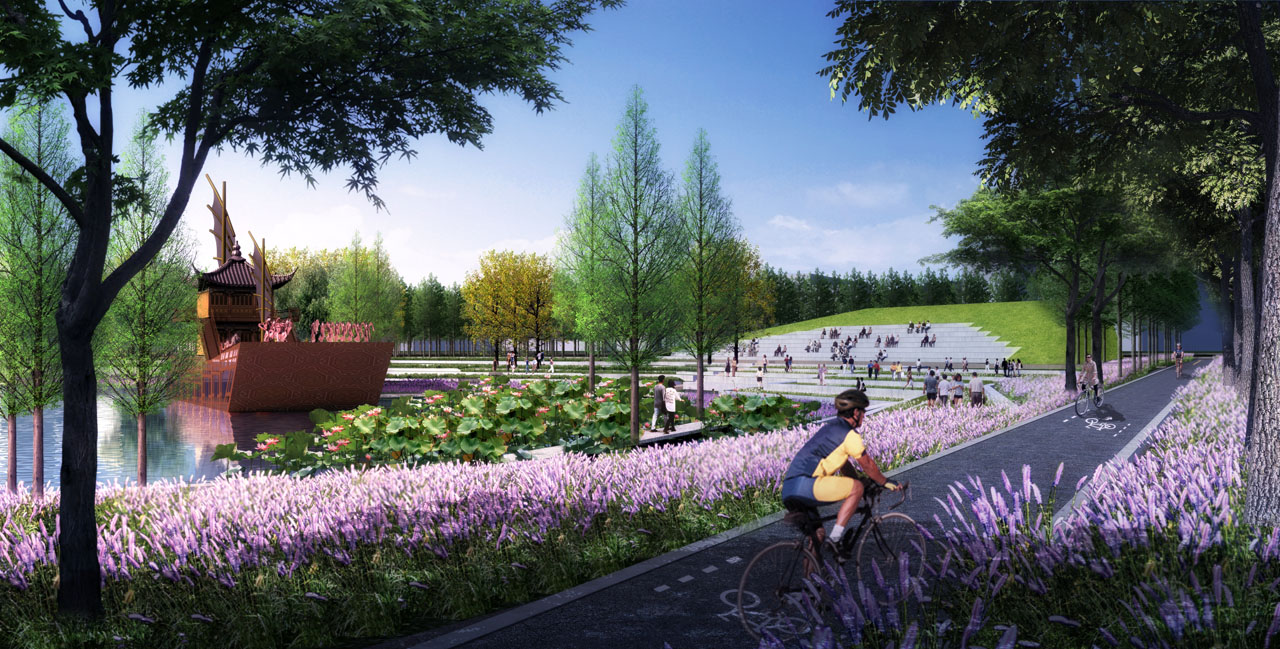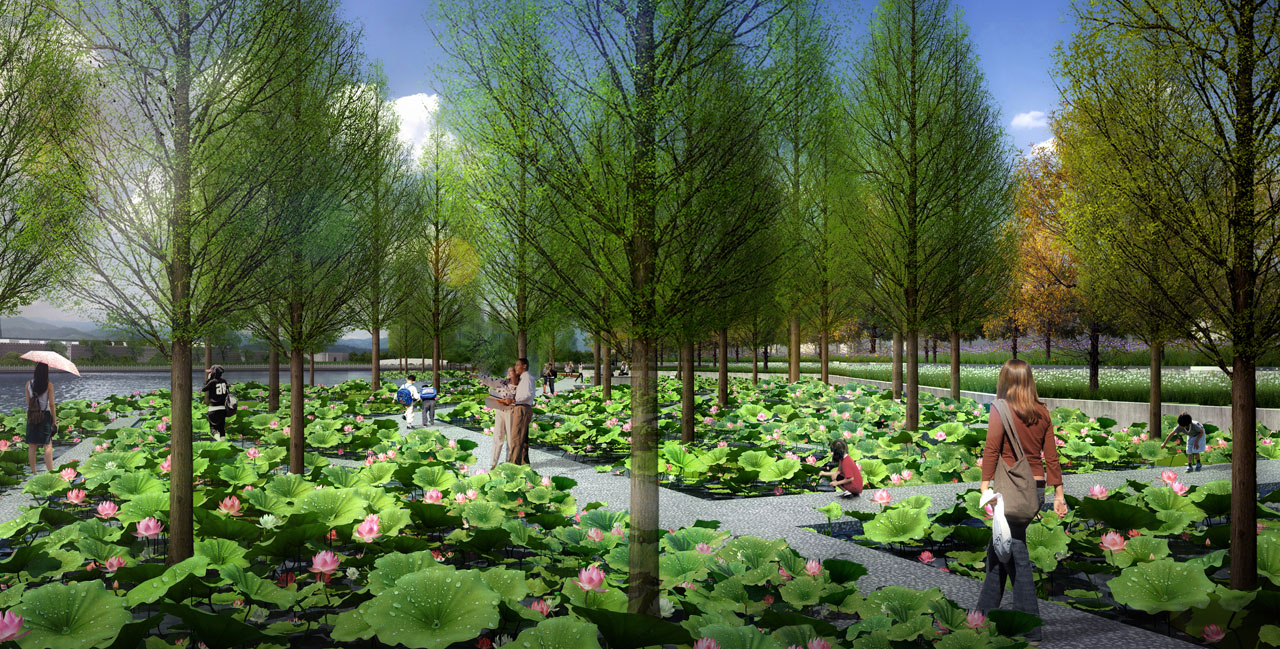Jingzhou Jiulongyuan Park
Project Information
- Project Location:
- China Jingzhou, Hubei
- Project Scale:
- 8.94 Hectares
- Design Time:
- June 2017
Project Profile
1. Project Statement
To improve the overall environment outside the East Gate of Jingzhou Ancient City and to create a waterfront venue for citizens that is accessible, recreational, public, and cultural, the municipal government plans to initiate the renovation and expansion of Jiulongyuan Park. The boundaries of Jiulongyuan Park are defined as: East to East Ring Road, South to South Ring Road, West to Guanyu Garden and Jiulongyuan City Moat, and North to Jiulong Bridge, covering an area of approximately 89,400 square meters. The renovation design includes new service buildings: a 600 square meter visitor service center, a 2,356 square meter Jiulongyuan Theater, and a 162 square meter public restroom. The parking facilities are divided into two areas, totaling 600 spaces, with 499 on the north side (47 above ground and 452 underground) and 101 on the south side (46 above ground and 55 under trees).
2. Objectve and Challenge
From a summary of the current situation, three challenges have been identified: 1. How to soften the hardened shoreline, enhance the waterfront experience, interact with attractions on the opposite bank, and balance recreation with ecology? 2. How to integrate local cultural activities into the site to enhance the park’s popularity, benefiting citizens and promoting tourism? 3. How to improve the landscape habitat while preserving existing healthy trees, balancing aesthetics and economics? Through site analysis and reference to similar completed projects, designers proposed removing the existing hardened revetment, using terraced retaining walls to resolve the height difference of the riverbank, and enriching riverbank vegetation to complement the ancient city wall on the opposite bank. The project is positioned as: Jingzhou Ancient City Moat Cultural Park (Historical Viewing Platform + Vibrant Waterfront Park + Slow Travel Connector).
3. Design Strategy
Design Methodologies:
- Lotus Pond Base: Soften the riverbank shoreline, beautify the riverside landscape, provide educational opportunities, showcase ecological concepts, create a productive landscape, and highlight the fish and rice culture of the region.
- Waterfront Forest: Plant multiple Taxodium (bald cypress) tree islands along the water's edge, which act as visual control elements.
- Boardwalk Platforms: Construct boardwalks along the water to create a water city experience, build elevated viewing platforms for scenic overlooks, and construct aerial bridges to connect to the Zhang Fei Yidan Tu attraction across East Ring Road.
- Terraced Viewing Platforms: Transform hardened revetments into waterfront viewing platforms, create unique vantage points for observing dragon boat races, viewing the Guanyu statue, and appreciating the ancient city on the opposite bank.
- Continuous Slow Paths: Enhance park recreational routes, providing waterfront paths connected to the surrounding area, jogging paths, and cycling paths.
- Earth-covered Buildings: Utilize site elevation differences to construct waterside shops and tiered earth-covered theaters, integrating with the surrounding landscape.
Theater Location Options:
- Option 1 (Relocation): Considering ecological corridors, pathways, and sightlines, position the theater at the intersection of East Ring Road and South Ring Road, ensuring convenient access and parking. Combine outdoor and indoor theater considerations, using the slopes of earth-covered buildings to set up outdoor viewing stands. When there are no performances, the outdoor theater serves as a public activity area, with enclosed management during performances.
- Option 2 (Original Location): Based on the feedback from performance departments, keep the theater at its original location. However, the current performance area affects the viewing experience from the city wall, requiring an integrated design with the park plan. The outdoor viewing area is designed to be about 950 square meters, with a performance area width of approximately 6 meters, maintaining consistency with the pre-design.
4. Conclusion
Since its completion, the park has become a recreational spot for local residents and a new gateway for the Jingzhou Ancient City tourist area. Designed as the most beautiful waterfront landscape along the moat, it preserves the healthy trees on site while creating more spaces for water interaction. The terraced viewing platform design strategy enhances the park’s functionality for observing nearby tourist landmarks and provides an ideal venue for citizens and tourists to enjoy diverse activities.
